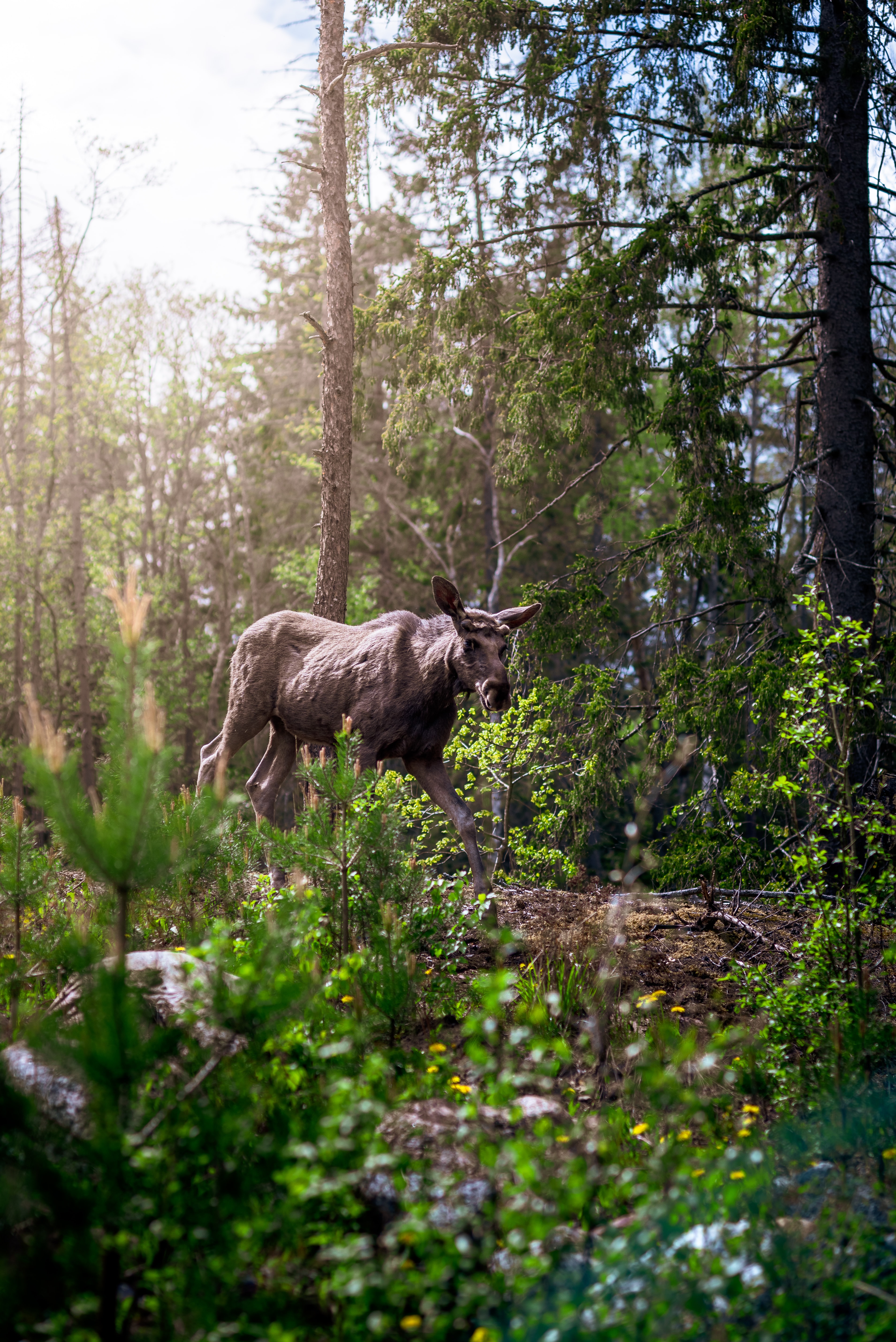Article – How moose diet and metabolism differ across biogeographic zones
Article – How moose diet and metabolism differ across biogeographic zones
As northern ecosystems across the globe experience extensive changes in land use and climate at accelerated rates, it becomes crucial to understand how animals in these extreme environments will adapt in the future. For example, what will they eat and how will they regulate their energy expenditure, and how are food and energy expenditure linked?
Until now, it has been difficult to study such adaptations in wild animals across different habitats in fine detail due to the lack of suitable and feasible technology.
In this study, using two new molecular methods to study diets (DNA-metabarcoding) and metabolism (NMR-based metabolomics), we investigate the adaptations of moose from coast to the mountains in northern Sweden. We analyse a large amount of blood and faecal samples of wild moose, acquired during multiple winters.
We found many new insights into moose ecology and physiology using these new methods. 1) moose adapt their diet to what is available. For example, moose can exclusively feed on pine, birch, willow/aspen or a mixture and these have consequences on the concentration of different key metabolites that indicate well-being. 2) moose in mountainous and coastal regions starved more than their counterparts in heavily managed pine forests. 3) we were also able to distinguish specific metabolites that differ between moose males and females, and could also prove that males enter the harsh winter with fewer energy stores than females because of the rut.
Our results indicate that, if the environment of moose continues to change at the current rate, they may suffer increased stress and starvation. Moreover, the balance between beneficial and harmful metabolites may shift leading to unpredictable individual and population level effects.
Fohringer, C., Dudka, I., Spitzer, R., Stenbacka, F., Rzhepishevska, Cromsigt, J.P.G.M., Gröbner, G., Ericsson, C. and Singh, N.J. (2021). Integrating omics to characterize eco-physiological adaptations: How moose diet and metabolism differ across biogeographic zones. Ecology and Evolution, 11(7). DOI: 10.1002/ece/3.7265
Photo Credit: Martin Isaksson




